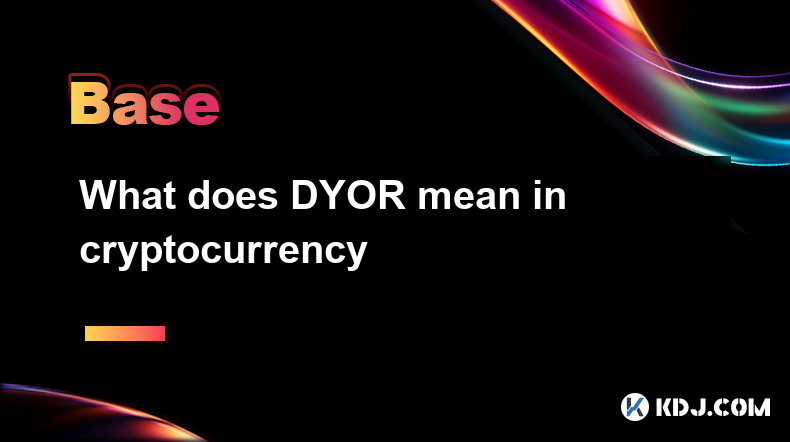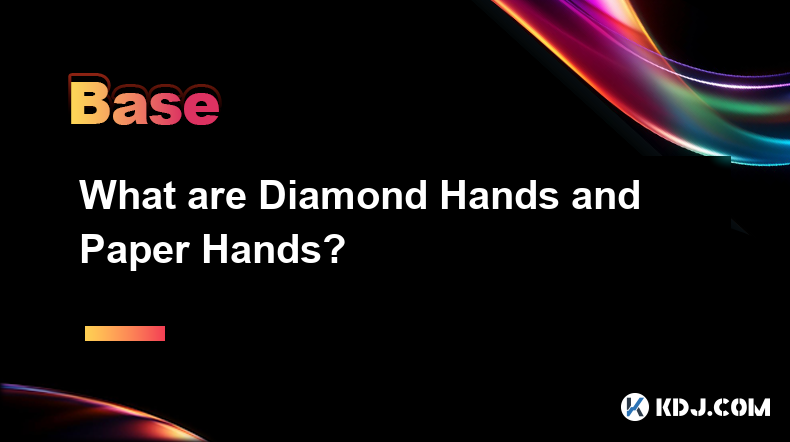-
 Bitcoin
Bitcoin $84,746.8458
1.38% -
 Ethereum
Ethereum $1,599.9678
1.70% -
 Tether USDt
Tether USDt $0.9999
0.00% -
 XRP
XRP $2.0964
1.36% -
 BNB
BNB $583.0128
0.48% -
 Solana
Solana $134.3695
6.66% -
 USDC
USDC $0.9999
-0.01% -
 Dogecoin
Dogecoin $0.1571
1.97% -
 TRON
TRON $0.2454
-2.87% -
 Cardano
Cardano $0.6218
2.30% -
 UNUS SED LEO
UNUS SED LEO $9.4459
0.81% -
 Chainlink
Chainlink $12.6179
2.89% -
 Avalanche
Avalanche $19.3873
3.08% -
 Toncoin
Toncoin $2.9588
3.39% -
 Stellar
Stellar $0.2386
2.07% -
 Shiba Inu
Shiba Inu $0.0...01199
2.62% -
 Sui
Sui $2.1064
0.09% -
 Hedera
Hedera $0.1606
1.94% -
 Bitcoin Cash
Bitcoin Cash $334.1878
3.76% -
 Polkadot
Polkadot $3.6890
4.16% -
 Litecoin
Litecoin $75.4722
-0.80% -
 Hyperliquid
Hyperliquid $16.3785
9.17% -
 Dai
Dai $1.0002
0.03% -
 Bitget Token
Bitget Token $4.3760
3.29% -
 Ethena USDe
Ethena USDe $0.9992
0.01% -
 Pi
Pi $0.6120
-0.65% -
 Monero
Monero $218.1328
0.12% -
 Uniswap
Uniswap $5.2684
1.93% -
 Pepe
Pepe $0.0...07341
3.76% -
 OKB
OKB $51.3100
-1.73%
What is Reorg?
Reorgs in blockchain can lead to transaction delays and double-spending; waiting for multiple confirmations can minimize their impact.
Apr 08, 2025 at 11:08 pm

What is Reorg?
In the world of cryptocurrencies, particularly those that operate on blockchain technology, the term Reorg or Blockchain Reorganization is a critical concept that users and developers need to understand. A reorg refers to a situation where the blockchain undergoes a reorganization of its blocks, which can lead to changes in the accepted version of the blockchain. This phenomenon is more common in cryptocurrencies that use Proof of Work (PoW) consensus mechanisms, such as Bitcoin and Ethereum (before its transition to Proof of Stake).
How Does a Reorg Occur?
A reorg happens when a blockchain network discovers a longer or more valid chain of blocks than the current accepted chain. This can occur due to several reasons, including network latency, where some nodes on the network receive and process transactions at different times. When a longer chain is discovered, the network will typically switch to this new chain, causing the previously accepted blocks to be orphaned or discarded. This process ensures that the blockchain maintains the longest valid chain, which is a fundamental principle of PoW systems.
Types of Reorgs
There are primarily two types of reorgs: short reorgs and long reorgs. Short reorgs are more common and typically involve only a few blocks. They are usually resolved quickly and have minimal impact on the network. Long reorgs, on the other hand, involve a significant number of blocks and can have more severe consequences, such as double-spending attacks or loss of trust in the network.
Impact of Reorgs on Transactions
When a reorg occurs, transactions that were included in the orphaned blocks may be temporarily invalidated. If a transaction is included in a block that gets orphaned, it will need to be rebroadcast and included in a new block. This can lead to delays in transaction confirmation and potential issues with double-spending, where an attacker attempts to spend the same cryptocurrency twice.
Preventing and Mitigating Reorgs
While reorgs are a natural part of blockchain operations, there are strategies to minimize their impact. One approach is to wait for multiple confirmations before considering a transaction final. For example, in Bitcoin, waiting for six confirmations is often recommended to ensure the transaction is secure. Additionally, developers can implement better network synchronization protocols to reduce the likelihood of reorgs.
Examples of Reorgs in Cryptocurrency
Several notable reorgs have occurred in the cryptocurrency space. One of the most famous examples is the Ethereum Classic 51% attack in January 2019, where attackers managed to reorganize the blockchain and double-spend a significant amount of cryptocurrency. Another example is the Bitcoin Cash hard fork in November 2018, which led to a temporary split in the blockchain and subsequent reorgs as the network stabilized.
Technical Details of a Reorg
To understand the technical aspects of a reorg, it's essential to delve into how blocks are validated and added to the blockchain. When a miner solves a block, it is broadcast to the network, and other nodes verify its validity. If the block is valid, it is added to the blockchain. However, if another miner solves a competing block at the same time, a temporary fork can occur. The network will eventually choose the longest valid chain, leading to a reorg if the competing chain becomes longer.
Reorgs and Consensus Mechanisms
Reorgs are more prevalent in PoW systems due to the nature of mining and the potential for competing chains. In contrast, Proof of Stake (PoS) systems, like Ethereum 2.0, are designed to be more resistant to reorgs. In PoS, validators are chosen to create new blocks based on the amount of cryptocurrency they hold and are willing to "stake" as collateral. This reduces the likelihood of competing chains and makes reorgs less common.
Reorgs and Network Security
The occurrence of reorgs can be an indicator of the health and security of a blockchain network. Frequent reorgs may suggest issues with network synchronization or potential attacks. Conversely, a well-functioning network with minimal reorgs indicates a robust and secure system. Monitoring reorgs and understanding their causes can help developers and users maintain the integrity of the blockchain.
Reorgs and User Experience
For users of cryptocurrencies, reorgs can be confusing and frustrating, especially if they lead to transaction delays or double-spending issues. Educating users about the nature of reorgs and the importance of waiting for multiple confirmations can help manage expectations and improve the overall user experience. Additionally, wallet and exchange providers can implement safeguards to protect users from the negative impacts of reorgs.
Frequently Asked Questions
Q: Can reorgs be completely prevented?
A: While reorgs cannot be entirely prevented due to the decentralized nature of blockchain networks, their impact can be minimized through strategies like waiting for multiple confirmations and improving network synchronization.
Q: How do reorgs affect the price of a cryptocurrency?
A: Reorgs can lead to temporary volatility in the price of a cryptocurrency, especially if they are perceived as a sign of network instability or potential attacks. However, the long-term impact on price depends on various factors, including the overall health of the network and market sentiment.
Q: Are reorgs more common in smaller cryptocurrencies?
A: Yes, reorgs can be more common in smaller cryptocurrencies due to lower network hash rates and less robust infrastructure. Smaller networks are more susceptible to 51% attacks, which can lead to reorgs.
Q: How can developers detect and respond to reorgs?
A: Developers can use blockchain explorers and monitoring tools to detect reorgs in real-time. Upon detection, they can analyze the cause of the reorg and implement necessary adjustments to the network protocol or consensus mechanism to prevent future occurrences.
Disclaimer:info@kdj.com
The information provided is not trading advice. kdj.com does not assume any responsibility for any investments made based on the information provided in this article. Cryptocurrencies are highly volatile and it is highly recommended that you invest with caution after thorough research!
If you believe that the content used on this website infringes your copyright, please contact us immediately (info@kdj.com) and we will delete it promptly.
- U.S. Miners Offload BTC Amid Tariff Fears and Profit Squeeze
- 2025-04-17 15:15:13
- Raydium Launches LaunchLab Targeting the Meme Coin Frenzy
- 2025-04-17 15:15:13
- Canada Becomes the First Jurisdiction to Launch Spot Solana (SOL) ETFs
- 2025-04-17 15:10:14
- Ethereum Network Fees Drop to 5-Year Lows as Market Activity Lulls
- 2025-04-17 15:10:14
- Can Shiba Inu (SHIB) Overtake Dogecoin (DOGE) in Market Cap? Experts Are Skeptical
- 2025-04-17 15:05:13
- Ethereum (ETH) Price Prediction: Bears Are in Control as ETH Slumps Below Key Support Levels
- 2025-04-17 15:05:13
Related knowledge

What does Floor Price mean in the NFT market
Apr 17,2025 at 12:42am
The term Floor Price is a critical concept within the NFT (Non-Fungible Token) market, serving as a key indicator for both buyers and sellers. In essence, the floor price represents the lowest price at which an NFT from a particular collection is currently listed for sale on a marketplace. This price point is crucial for understanding the perceived valu...

What does DYOR mean in cryptocurrency
Apr 17,2025 at 03:00pm
DYOR, or 'Do Your Own Research,' is a crucial mantra in the cryptocurrency community. It emphasizes the importance of individuals conducting their own thorough investigations before making any investment decisions. In the fast-paced and often volatile world of cryptocurrencies, relying solely on others' advice or the hype surrounding a particular coin c...

What is Alpha? How to find Alpha opportunities?
Apr 16,2025 at 12:42pm
What is Alpha?Alpha is a term widely used in the financial world, including the cryptocurrency market, to describe the ability of an investment to outperform a benchmark. In the context of cryptocurrencies, alpha refers to the excess return an investor achieves over the market's average return. For example, if the overall crypto market grows by 10% in a...

Why do cryptocurrency enthusiasts like to say GM?
Apr 16,2025 at 06:21am
In the world of cryptocurrency, the term 'GM' has become a popular greeting among enthusiasts. GM stands for 'Good Morning,' and its widespread use within the crypto community has a deeper significance than just a simple greeting. This article delves into the reasons why cryptocurrency enthusiasts like to say GM, exploring its origins, cultural signific...

What do WAGMI and NGMI mean?
Apr 16,2025 at 08:08pm
In the world of cryptocurrency, you might often come across the acronyms WAGMI and NGMI. These terms have become part of the crypto slang and are frequently used in discussions, tweets, and forums related to digital currencies. Let's delve into what these terms mean, their origins, and how they are used within the crypto community. Understanding WAGMIWA...

What are Diamond Hands and Paper Hands?
Apr 16,2025 at 10:42am
In the world of cryptocurrencies, the terms Diamond Hands and Paper Hands are frequently used to describe the behavior and mindset of investors, particularly in volatile markets. These terms originated from online communities and have become a significant part of the crypto lexicon, often used to describe the level of resilience and commitment an invest...

What does Floor Price mean in the NFT market
Apr 17,2025 at 12:42am
The term Floor Price is a critical concept within the NFT (Non-Fungible Token) market, serving as a key indicator for both buyers and sellers. In essence, the floor price represents the lowest price at which an NFT from a particular collection is currently listed for sale on a marketplace. This price point is crucial for understanding the perceived valu...

What does DYOR mean in cryptocurrency
Apr 17,2025 at 03:00pm
DYOR, or 'Do Your Own Research,' is a crucial mantra in the cryptocurrency community. It emphasizes the importance of individuals conducting their own thorough investigations before making any investment decisions. In the fast-paced and often volatile world of cryptocurrencies, relying solely on others' advice or the hype surrounding a particular coin c...

What is Alpha? How to find Alpha opportunities?
Apr 16,2025 at 12:42pm
What is Alpha?Alpha is a term widely used in the financial world, including the cryptocurrency market, to describe the ability of an investment to outperform a benchmark. In the context of cryptocurrencies, alpha refers to the excess return an investor achieves over the market's average return. For example, if the overall crypto market grows by 10% in a...

Why do cryptocurrency enthusiasts like to say GM?
Apr 16,2025 at 06:21am
In the world of cryptocurrency, the term 'GM' has become a popular greeting among enthusiasts. GM stands for 'Good Morning,' and its widespread use within the crypto community has a deeper significance than just a simple greeting. This article delves into the reasons why cryptocurrency enthusiasts like to say GM, exploring its origins, cultural signific...

What do WAGMI and NGMI mean?
Apr 16,2025 at 08:08pm
In the world of cryptocurrency, you might often come across the acronyms WAGMI and NGMI. These terms have become part of the crypto slang and are frequently used in discussions, tweets, and forums related to digital currencies. Let's delve into what these terms mean, their origins, and how they are used within the crypto community. Understanding WAGMIWA...

What are Diamond Hands and Paper Hands?
Apr 16,2025 at 10:42am
In the world of cryptocurrencies, the terms Diamond Hands and Paper Hands are frequently used to describe the behavior and mindset of investors, particularly in volatile markets. These terms originated from online communities and have become a significant part of the crypto lexicon, often used to describe the level of resilience and commitment an invest...
See all articles























































































